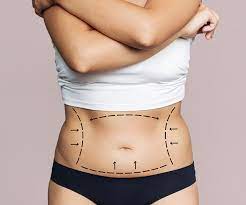A Tummy Tuck—clinically known as abdominoplasty—is a transformative cosmetic procedure designed to sculpt and flatten the abdominal area by removing excess skin and tightening the underlying muscles. It is ideal for individuals who, despite regular exercise and a healthy diet, struggle with loose skin or weakened abdominal muscles due to aging, pregnancy, or significant weight fluctuations. However, not everyone qualifies for this surgery. Determining candidacy requires a detailed assessment by a qualified aesthetic surgeon. Each patient is evaluated on several clinical and anatomical factors to ensure the procedure delivers optimal, safe, and lasting results. This assessment is crucial for those considering a Tummy Tuck in Dubai.
Ideal Physical Characteristics for Candidacy
Excess Skin and Fat in the Abdominal Area
The most obvious determinant of candidacy is the presence of excess, sagging skin and localized fat around the midsection. Patients who have experienced major weight loss or multiple pregnancies often face abdominal skin that has lost elasticity. A tummy tuck is ideal when the skin cannot retract naturally.
Weak or Separated Abdominal Muscles
Also known as diastasis recti, separated abdominal muscles commonly occur post-pregnancy. When these muscles fail to realign naturally, no amount of exercise can restore the flatness of the stomach. Surgeons identify such muscle separation through a clinical exam and imaging, determining the need for surgical repair.
Stable Body Weight
Patients should have reached a stable weight before undergoing a tummy tuck. Rapid weight fluctuations can distort results and complicate healing. Ideal candidates have maintained their current weight for at least six months prior to consultation.

Lifestyle and Health Considerations
1. Non-Smokers or Willingness to Quit
Smoking impairs blood circulation and significantly delays healing. Surgeons generally require patients to quit smoking several weeks before and after the surgery. Continued smoking can compromise tissue repair and lead to complications.
2. No Underlying Medical Conditions
Good overall health is mandatory for a tummy tuck. Candidates are screened for heart disease, diabetes, or autoimmune disorders that could impair recovery or increase the risk of complications. A full medical history is reviewed, and diagnostic testing is often ordered.
3. No Plans for Future Pregnancies
While a tummy tuck does not prevent future pregnancies, it is highly recommended that patients complete their family planning beforehand. Pregnancy can stretch the abdominal muscles and skin again, reversing the results of the procedure.
Psychological Readiness and Realistic Expectations
1. Understanding the Procedure and Recovery
An ideal candidate fully understands what the tummy tuck procedure entails, including the recovery process and commitment to post-surgical instructions. The procedure is not a weight-loss method but a body contouring solution, and patients must be emotionally and mentally prepared.
2. Realistic Expectations
Doctors evaluate whether a patient expects dramatic, overnight results or understands that improvements develop gradually as swelling reduces and healing occurs. Unrealistic expectations can lead to dissatisfaction despite excellent surgical outcomes.
Skin Quality and Elasticity
Surgeons assess the degree of skin laxity and the presence of stretch marks or scarring from previous surgeries. Patients with moderately elastic skin tend to achieve more refined outcomes since the remaining skin must adapt well to the newly contoured shape. While stretch marks can be partially removed if located on the excised skin, they cannot be fully eliminated unless specifically within the treated area.
Evaluation of Fat Distribution
Doctors examine how fat is distributed in the abdominal region. If fat is predominantly located beneath the skin (subcutaneous fat), a tummy tuck is more effective. However, if visceral fat surrounds the internal organs, the patient may first be advised to pursue a healthier lifestyle, as this type of fat is not accessible through surgery.
Scarring from Previous Abdominal Procedures
Individuals with prior abdominal surgeries such as cesarean sections or hernia repairs may still qualify. However, surgeons must evaluate scar placement and depth. Some existing scars can be revised or incorporated into the new incision line, while others may limit how much skin can be safely removed.
Age and Hormonal Factors
While there is no strict age limit, hormonal changes associated with aging can impact healing and skin quality. Surgeons focus more on physiological age rather than chronological age. Patients over 50 may still be excellent candidates if they meet all other health and anatomical criteria.
Customized Treatment Plans by Qualified Surgeons
Candidacy is determined through a personalized consultation with a board-certified plastic surgeon. During this visit, doctors perform a physical assessment, review medical history, and discuss aesthetic goals. They may also take digital photographs and use computer imaging to show predicted outcomes.
The treatment plan often varies depending on whether a patient needs a full or mini tummy tuck, or if muscle repair is required. Some patients may also benefit from combining the procedure with liposuction to enhance the waistline contour.
Timeline and Preparation for Surgery
Once candidacy is confirmed, surgeons guide the patient through a pre-operative process which includes:
- Routine lab tests and imaging
- Ceasing certain medications or supplements
- Developing a post-operative support plan (transportation, home care, etc.)
- Nutritional optimization for healing
Doctors ensure that each step aligns with the goal of delivering safe, beautiful, and lasting tummy tuck outcomes.
Long-Term Commitment and Lifestyle Alignment
Doctors favor candidates who are committed to maintaining results long-term. This includes:
- A balanced, nutrient-rich diet
- Regular exercise tailored to the healing stage
- Avoiding harmful habits like smoking or excessive alcohol
Surgeons emphasize that the tummy tuck’s aesthetic impact will last only if the patient sustains a healthy lifestyle.
Benefits of a Tummy Tuck
A tummy tuck offers a host of physical and psychological benefits, especially for patients who are ideal candidates:
- Enhanced Abdominal Contour: Removal of excess skin and tightening of muscles restores a flatter, firmer midsection.
- Improved Posture and Core Strength: Repairing weakened muscles can correct posture and reduce back pain caused by muscle imbalance.
- Better Fit in Clothing: Many patients experience improved confidence as they find clothes fit more comfortably and flatteringly.
- Elimination of Skin Irritation: By removing loose, overhanging skin, the procedure helps prevent skin rashes and infections.
- Boost in Confidence: The visible transformation often leads to renewed self-esteem and body image satisfaction.
Final Thoughts
Not everyone qualifies for a tummy tuck, but a thorough evaluation by an experienced plastic surgeon ensures only the right candidates move forward. When a patient is physically and psychologically ready, has realistic goals, and is committed to long-term wellness, the procedure can yield life-changing results. Each case is unique, and the best outcomes come from tailored, expert care.
































